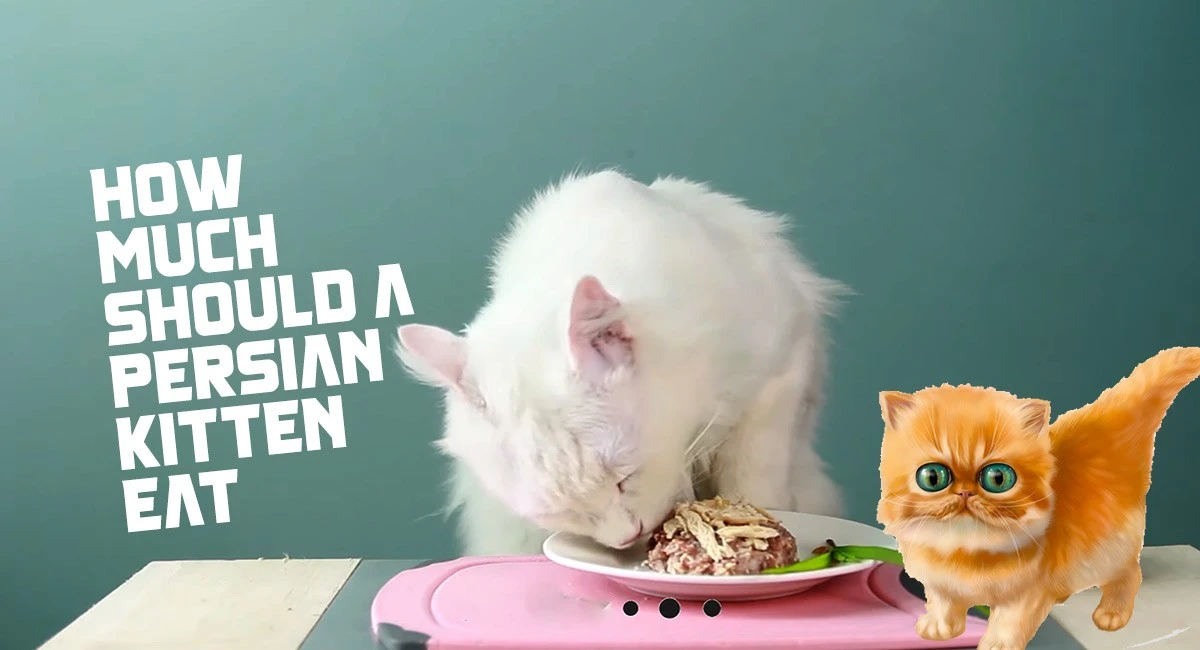Persian cats are a beloved breed known for their long, luxurious fur and affectionate temperament. However, Persian kittens have specific nutritional needs that require careful attention regarding their diet. Feeding your Persian kitten the right amount of food ensures their growth and overall health.
Nutritional Needs of Persian Kittens
Persian Kitten Growth Stages
Persian kittens go through rapid growth phases during the first year of life. Their nutritional needs are higher than those of adult cats because they require more energy to support their development. The feeding schedule and portion sizes should be tailored to these needs, ensuring your kitten is neither overfed nor underfed.
Importance of Proper Nutrition
Proper nutrition is essential for the healthy development of Persian kittens. The appropriate diet supports their immune system, helps them develop strong bones and muscles, and keeps their fur looking its best. An inadequate diet can lead to various health issues, including obesity, malnutrition, and growth problems.
How Much Should a Persian Kitten Eat?
Persian kittens have different dietary needs compared to adult cats. On average, a Persian kitten should consume around 4-6 ounces of food daily, divided into three to four meals. This amount can vary depending on the kitten’s age, weight, and activity level. Monitoring your kitten’s weight and adjusting the portion sizes as they grow is crucial.
Feeding Table for Persian Kittens
| Features | Values |
|---|---|
| Average Daily Food Intake | 4-6 ounces |
| Number of Meals Per Day | 3-4 meals |
| Type of Food | Wet food (preferred for hydration) or dry food |
| Portion Size Per Meal | 1-2 ounces |
| Ideal Weight Monitoring | Regular vet check-ups to ensure healthy weight gain |
| Feeding Schedule | Adjust as the kitten grows (reduce meals to 2-3 times/day) |
| Veterinarian Consultation | Essential for personalized diet advice |
How Often to Feed a Persian Kitten
Feeding Frequency Based on Age
- 0-4 Months: During this early stage, Persian kittens should be fed four times daily. Their tiny stomachs require frequent meals to get enough nutrients for their rapid growth.
- 4-6 Months: As your kitten grows, you can reduce the feeding frequency to three times daily. This adjustment helps them transition to an adult feeding schedule.
- 6 Months and Older: Around six months, you can start feeding your kitten two to three times a day, similar to adult cats. However, their activity level and overall health should be considered before making this change.
Why Feeding Frequency Matters
The frequency of feeding impacts your kitten’s digestion and energy levels. Kittens fed too infrequently may experience energy dips while overfeeding, leading to digestive problems and obesity. Sticking to a regular feeding schedule ensures your kitten has consistent energy and avoids health complications.
What Type of Food is Best for Persian Kittens?
Wet Food vs. Dry Food
- Wet Food: Wet food is generally recommended for Persian kittens due to its higher moisture content, which helps keep them hydrated. This is particularly important for Persian cats, as they can be prone to urinary tract issues.
- Dry Food: While dry food is convenient and helps maintain dental health, it should be balanced with wet food to prevent dehydration. Dry food can be left out for nibbling throughout the day but should not be the sole diet.
Nutritional Content
When choosing food for your Persian kitten, look for products high in protein and low in fillers. The first ingredient should always be a high-quality source of protein, such as chicken or fish. Avoid foods with excessive grains or artificial additives, as these can lead to digestive issues and allergies.
Factors Influencing Your Persian Kitten’s Diet
Age and Growth Stage
As discussed, a Persian kitten’s age is a primary factor in determining how much and how often they should eat. Younger kittens require more frequent meals with higher caloric content, while older kittens transition to fewer meals as they approach adulthood.
Activity Level
Persian kittens that are more active will naturally burn more calories and may require slightly larger portions or more frequent meals. Conversely, less active kittens might need reduced portions to avoid weight gain.
Individual Health Needs
Like humans, each kitten is unique and may have specific dietary needs. Some Persian kittens might have food allergies or sensitivities, while others may require a special diet due to a health condition. Always consult a veterinarian to tailor the diet to your kitten’s health needs.
How Many Times a Day Does a Persian Cat Eat?
As Persian kittens grow into adults, their feeding schedule will naturally adjust. Adult Persian cats typically eat two to three times a day. However, this can vary depending on the cat’s weight, age, and overall health. Maintaining a consistent feeding routine helps avoid digestive issues and keeps your cat’s weight in check.
Transitioning from Kitten to Adult Food
When your Persian kitten reaches about one year of age, you can begin transitioning them from kitten food to adult food. This process should be gradual to avoid digestive upset. Start by mixing a small amount of adult food with their regular kitten food, gradually increasing the proportion of adult food over a week or two.
Proper nutrition for your Persian kitten is crucial for their growth and well-being. By understanding their unique dietary needs, you can ensure that your kitten grows into a healthy and happy adult cat. Remember to monitor their weight, adjust their feeding schedule as they grow, and consult with your veterinarian to tailor their diet to their specific needs.
Feeding your Persian kitten the right amount at the right frequency, with the appropriate type of food, sets the foundation for a long, healthy life. Stay informed, follow these guidelines, and don’t hesitate to seek professional advice if you have any concerns about your kitten’s diet. Your Persian kitten deserves the best care, starting with proper nutrition.
